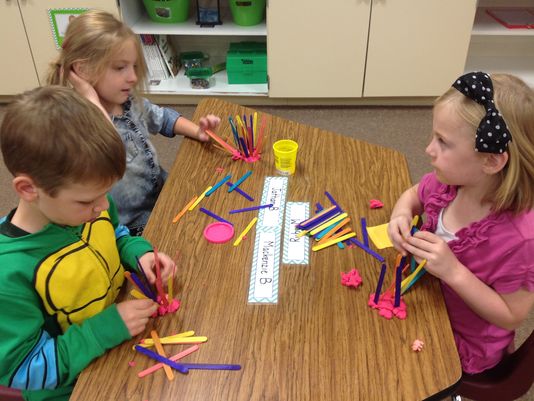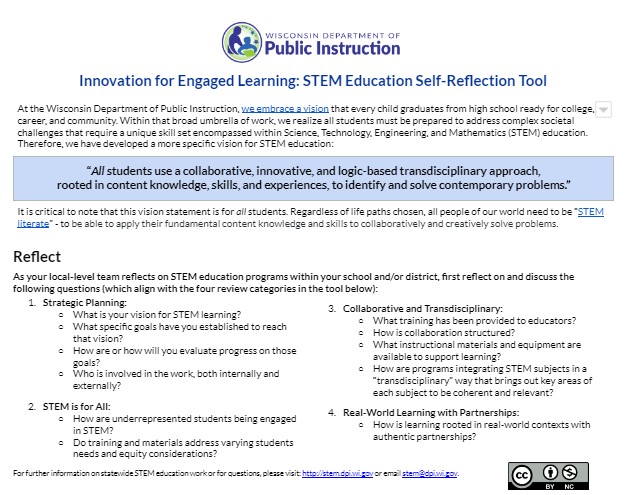Profiles of STEM/STEAM Education Programs in Wisconsin
DPI staff emailed and interviewed teachers and administrators in these districts in 2021 to develop these initial profiles of STEM programs. The wording largely comes from their answers with edits for clarity and cohesion. Notably, these profiles are a snapshot in time, and their work has changed since 2021. As part of this work, STEM teams piloted the DPI STEM Self-Reflection Tool and provided feedback on it. Topics in the profiles include the following: vision and why for STEM (or STEAM), history of the program including who was involved in developing it, what the program looks like, school structures for organizing the program, equity and access efforts, community connections, professional learning, challenges, and evaluation. 
- Watertown - shares the stories of Lincoln STEM Elementary School, a STEM themed neighborhood school, and Riverside STEM Academy, a program within a traditional middle school. District and school level perspectives are called out.
- Beloit - shares the story of STEM programming, including materials adoption, from an administrative perspective. While it is largely a K-8 focus, there are some high school connections.
- Chippewa Falls High School - shares a the high school story from "Chi-Hi" with a particular emphasis on a school STEAM team and a community supported Maker Space.
A Self-Reflection Tool for STEM Programs
 How well is your school or district progressing toward your vision for STEM learning? This STEM program Self-Reflection Tool (pdf) from DPI aims to support program leaders in reflecting on progress towards a STEM vision for all students. The goal is to spur conversations, not "achieve" a particular score. All categories will not necessarily be relevant to all programs. It is a tool to help determine prioritized next steps, which will be different for each school or district.
How well is your school or district progressing toward your vision for STEM learning? This STEM program Self-Reflection Tool (pdf) from DPI aims to support program leaders in reflecting on progress towards a STEM vision for all students. The goal is to spur conversations, not "achieve" a particular score. All categories will not necessarily be relevant to all programs. It is a tool to help determine prioritized next steps, which will be different for each school or district.
Links to DPI and other program reflection tools:
- DPI's STEM program Self-Reflection Tool
- Cognia STEM Standards
- Univ of Chicago STEM School Study
- Carnegie STEM Excellence Pathway
As noted in the DPI Reflection Tool, key aspects in a program review process may include:
- Reflecting on Vision and Goals - Do our vision and goals still represent current work and priorities? If we do not have them, what is our shared vision? How do we plan to get there?
- Gathering Evidence - What students and student subgroups access these programs? What are course, assessment, and post-secondary outcomes for all students? How are we measuring STEM literacy?
- Celebrate Successes - Where do we see highlights and how do we share those stories? What instructional materials and practices are particularly meaningful for students? How are community partners collaborating on our efforts?
- Review Challenges - What are the root causes of the barriers we're encountering? What flexibilities do we have and not have?
- Next Steps - What are our revised goals and timelines, and who is responsible?